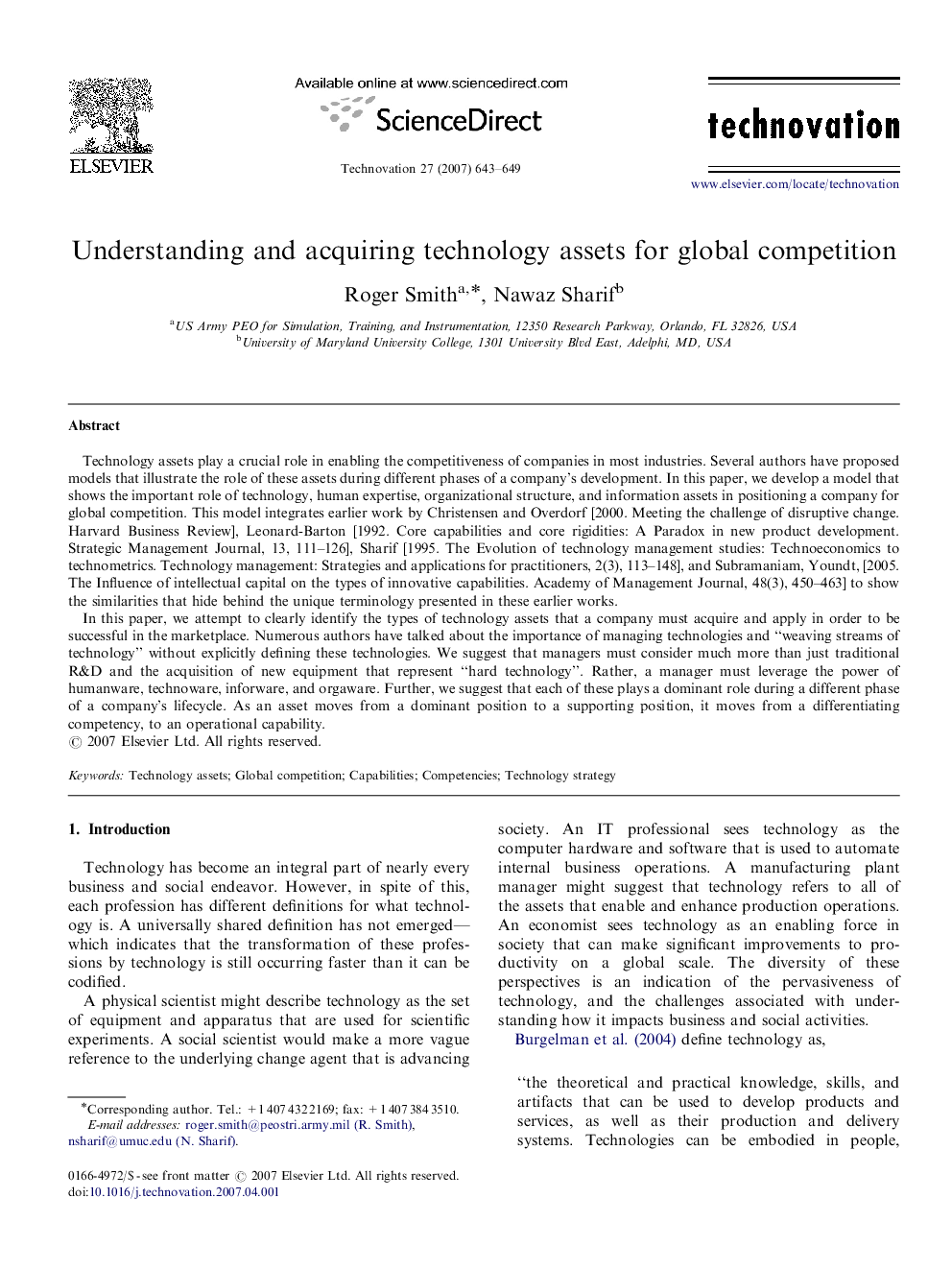| Article ID | Journal | Published Year | Pages | File Type |
|---|---|---|---|---|
| 1022390 | Technovation | 2007 | 7 Pages |
Technology assets play a crucial role in enabling the competitiveness of companies in most industries. Several authors have proposed models that illustrate the role of these assets during different phases of a company's development. In this paper, we develop a model that shows the important role of technology, human expertise, organizational structure, and information assets in positioning a company for global competition. This model integrates earlier work by Christensen and Overdorf [2000. Meeting the challenge of disruptive change. Harvard Business Review], Leonard-Barton [1992. Core capabilities and core rigidities: A Paradox in new product development. Strategic Management Journal, 13, 111–126], Sharif [1995. The Evolution of technology management studies: Technoeconomics to technometrics. Technology management: Strategies and applications for practitioners, 2(3), 113–148], and Subramaniam, Youndt, [2005. The Influence of intellectual capital on the types of innovative capabilities. Academy of Management Journal, 48(3), 450–463] to show the similarities that hide behind the unique terminology presented in these earlier works.In this paper, we attempt to clearly identify the types of technology assets that a company must acquire and apply in order to be successful in the marketplace. Numerous authors have talked about the importance of managing technologies and “weaving streams of technology” without explicitly defining these technologies. We suggest that managers must consider much more than just traditional R&D and the acquisition of new equipment that represent “hard technology”. Rather, a manager must leverage the power of humanware, technoware, inforware, and orgaware. Further, we suggest that each of these plays a dominant role during a different phase of a company's lifecycle. As an asset moves from a dominant position to a supporting position, it moves from a differentiating competency, to an operational capability.
